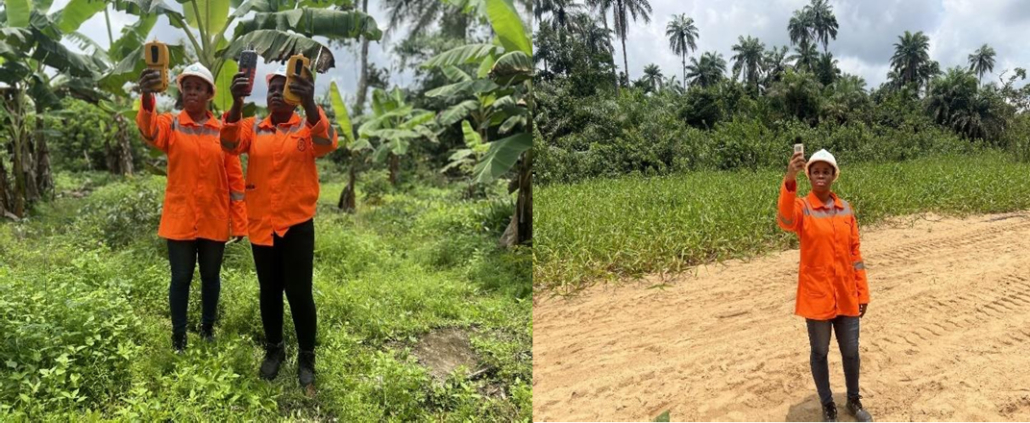Progress Update:WESTFLUX’s Small-Scale LNG Project – Environmental Impact Assessment (EIA)
Westflux Integrated Services Limited (Westflux),is a prominent gas company based in Nigeria, that specializes in the full range of activities associated with the processing and strategic distribution of processed gas. The company is set up as a midstream energy company seeking to develop and operate gas processing facilities with capacities up to 50MMSCF/D.
As a dynamic gas company, Westflux is heading the development of a natural gas processing facility at Aboh, located in Ndokwa East Local Government Area of Delta State.
This development has already acquired land and approved by regulatory bodies (NMDPRA and FMEnv). Gas for the Westflux processing facility shall be supplied via pipeline connection to a nearby major trunk line the flange at Aboh. After metering for custody transfer and commercial purposes, the gas shall then be fed into the plant for processing. The final product shall be stored in the storage tank on-site and subsequently loaded into the cryogenic containers for transport to the customers by river via barge or by road via trucks.
The gas processing plant offers significant economic benefits, such as stimulating economic growth by creating jobs, attracting investment, and generating revenue through the sale of processed gas.
Recent advancements in this project highlights that a sisignificant progress has achieved on a crucial component of the project, the Environmental Impact Assessment (EIA). In this blog post, we’ll explore what the EIA involves and why it’s vital for energy projects, especially those striving to balance growth with environmental stewardship.
What is an Environmental Impact Assessment (EIA)?
An Environmental Impact Assessment is a systematic process designed to evaluate the potential environmental effects of a proposed project before any decisions are made. It examines how a project might impact air quality, water resources, wildlife habitats, and local communities. The EIA process typically includes the following key steps:
- Screening: Determining whether a project requires a full EIA based on its potential impacts.
- Scoping: Identifying the key issues and concerns to be addressed in the assessment.
- Impact Analysis: Evaluating potential environmental effects, including direct, indirect, and cumulative impacts.
- Mitigation Measures: Proposing strategies to minimize negative effects on the environment.
- Reporting: Documenting the findings in an EIA report, which is made available for public review.
- Public Consultation: Engaging stakeholders and the community to gather feedback and incorporate local knowledge.
- Decision-Making: Regulatory authorities review the EIA and decide whether to approve the project, often with conditions based on the assessment findings.
Why is the EIA Important for Small-Scale LNG Projects?
The EIA is especially crucial for small-scale LNG projects for several reasons:
1. Environmental Protection
The primary goal of an EIA is to safeguard the environment by identifying and mitigating potential adverse effects. Given that LNG projects can impact ecosystems and local communities, a thorough assessment helps ensure that natural resources are managed sustainably.
2. Informed Decision-Makin
The EIA provides essential data and analysis that inform decision-makers. By understanding environmental implications, project developers and regulators can prioritize ecological integrity while facilitating economic growth.
3. Stakeholder Engagement
An effective EIA process includes public consultation, allowing local communities to voice their concerns and share their insights. This engagement fosters transparency and builds trust, leading to better project outcomes.
4. Regulatory Compliance
Most jurisdictions require an EIA for energy projects, especially those involving fossil fuels. Completing a comprehensive EIA is crucial for WESTFLUX to meet regulatory requirements and avoid potential legal challenges.
5. Sustainable Developmen
By identifying ways to minimize environmental impact, the EIA supports the broader goal of sustainable development. This ensures that energy projects contribute to economic growth without compromising the health of the planet for future generations.
Current Progress of WESTFLUX’s EIA
As WESTFLUX advances through the EIA process, significant progress has been made in assessing the potential impacts of its small-scale LNG project. The company is committed to transparency and sustainability, engaging with local stakeholders to discuss findings and gather feedback.
The completed EIA report is expected to highlight various mitigation measures aimed at protecting the livelihood of the community members, eliminating emissions, protecting local wildlife, and ensuring water quality is maintained over the life of the project. These measures will be critical in addressing community concerns and demonstrating WESTFLUX’s commitment to environmental responsibility.
Here are some pictures from the EIA:



Conclusion
The ongoing EIA process is a cornerstone of WESTFLUX’s small-scale LNG project, reflecting a commitment to responsible energy development. As the project moves forward, it serves as a model for integrating environmental considerations into energy initiatives. By prioritizing ecological sustainability alongside economic development, WESTFLUX is paving the way for a greener energy future.
Stay tuned for more updates as WESTFLUX continues its journey toward a sustainable LNG solution that benefits both the environment and the community!



https://shorturl.fm/P5bsf
https://shorturl.fm/7vcJr
https://shorturl.fm/PwQmN
https://shorturl.fm/1BRjV
https://shorturl.fm/QgYQC
https://shorturl.fm/GLWgo
https://shorturl.fm/QPHU6
https://shorturl.fm/MOanb